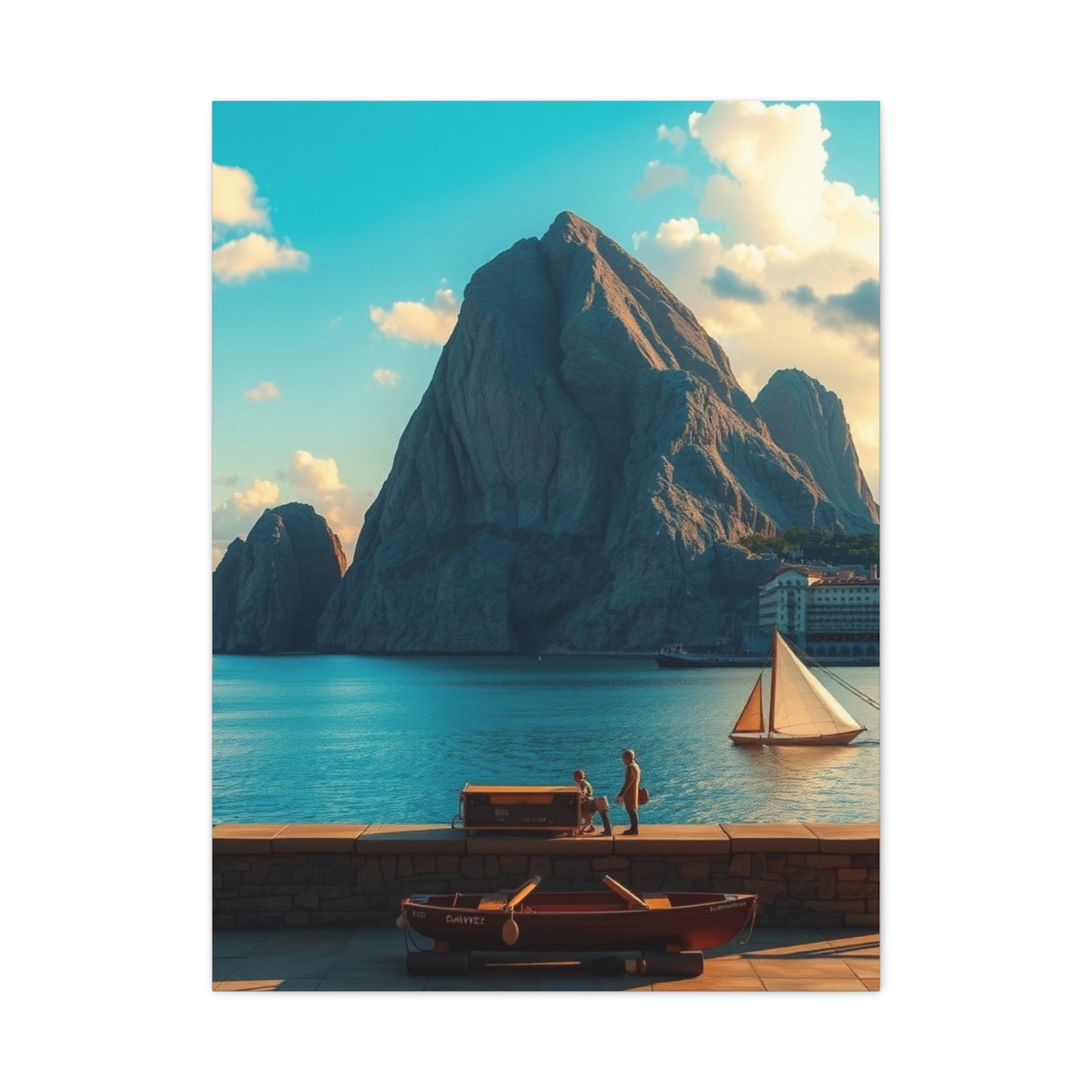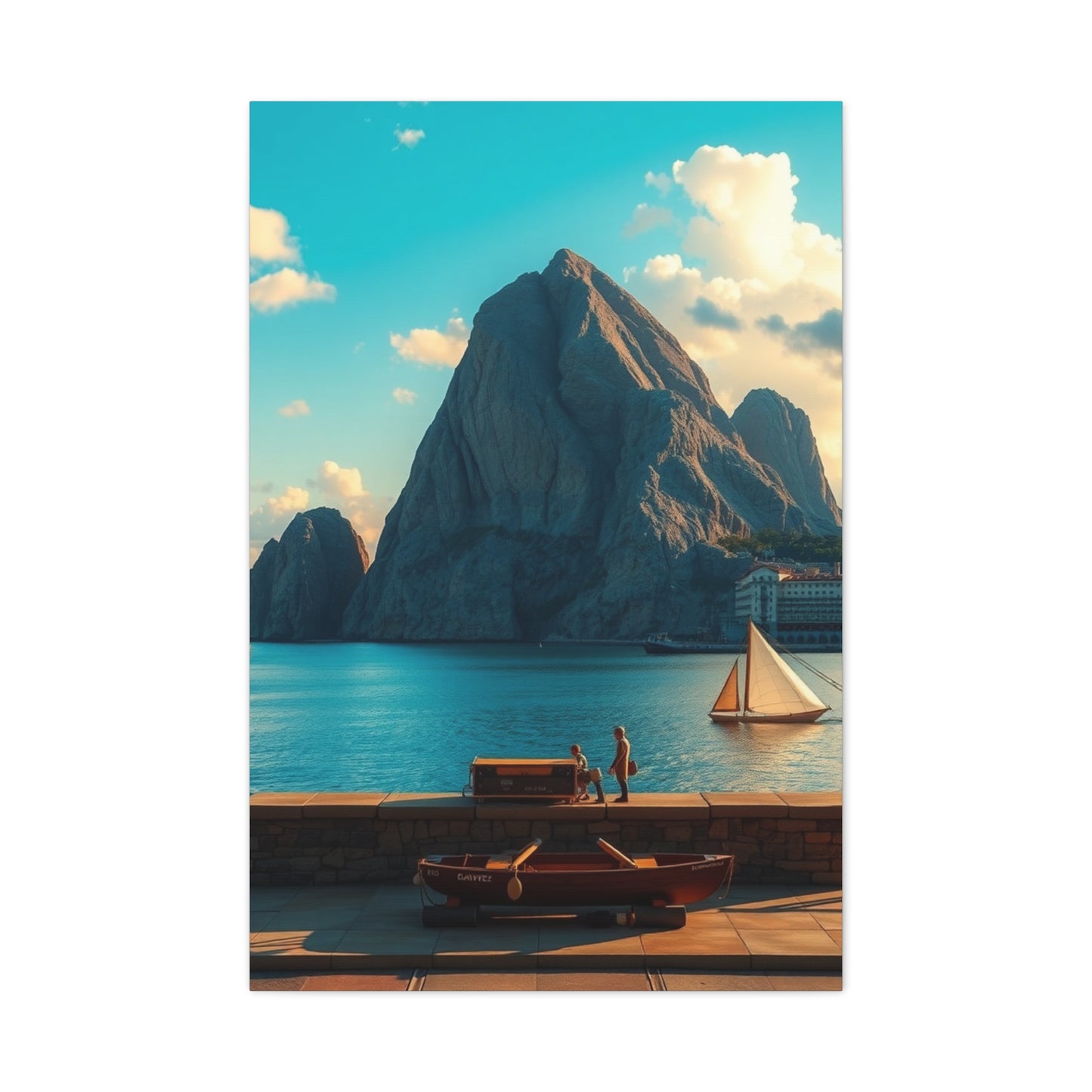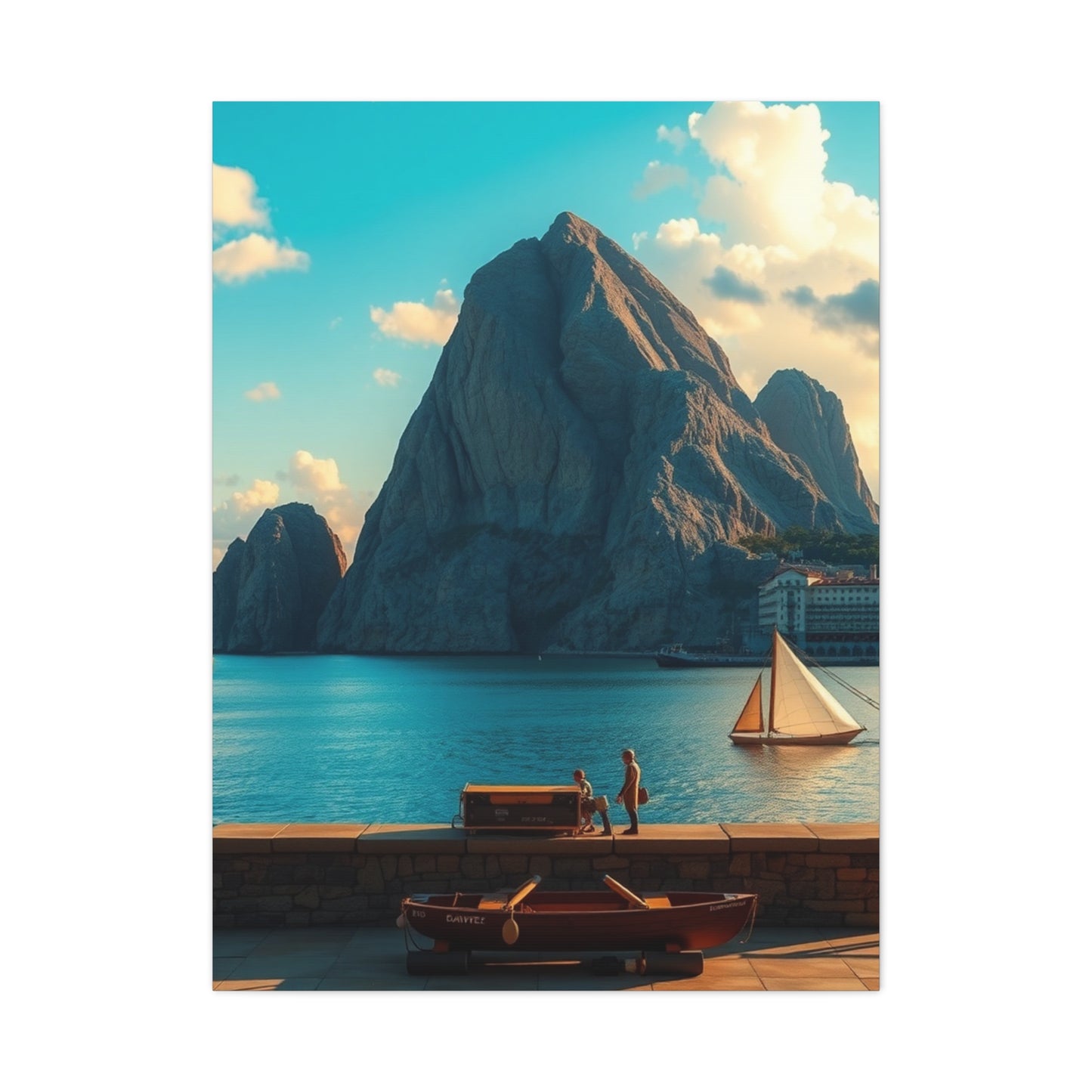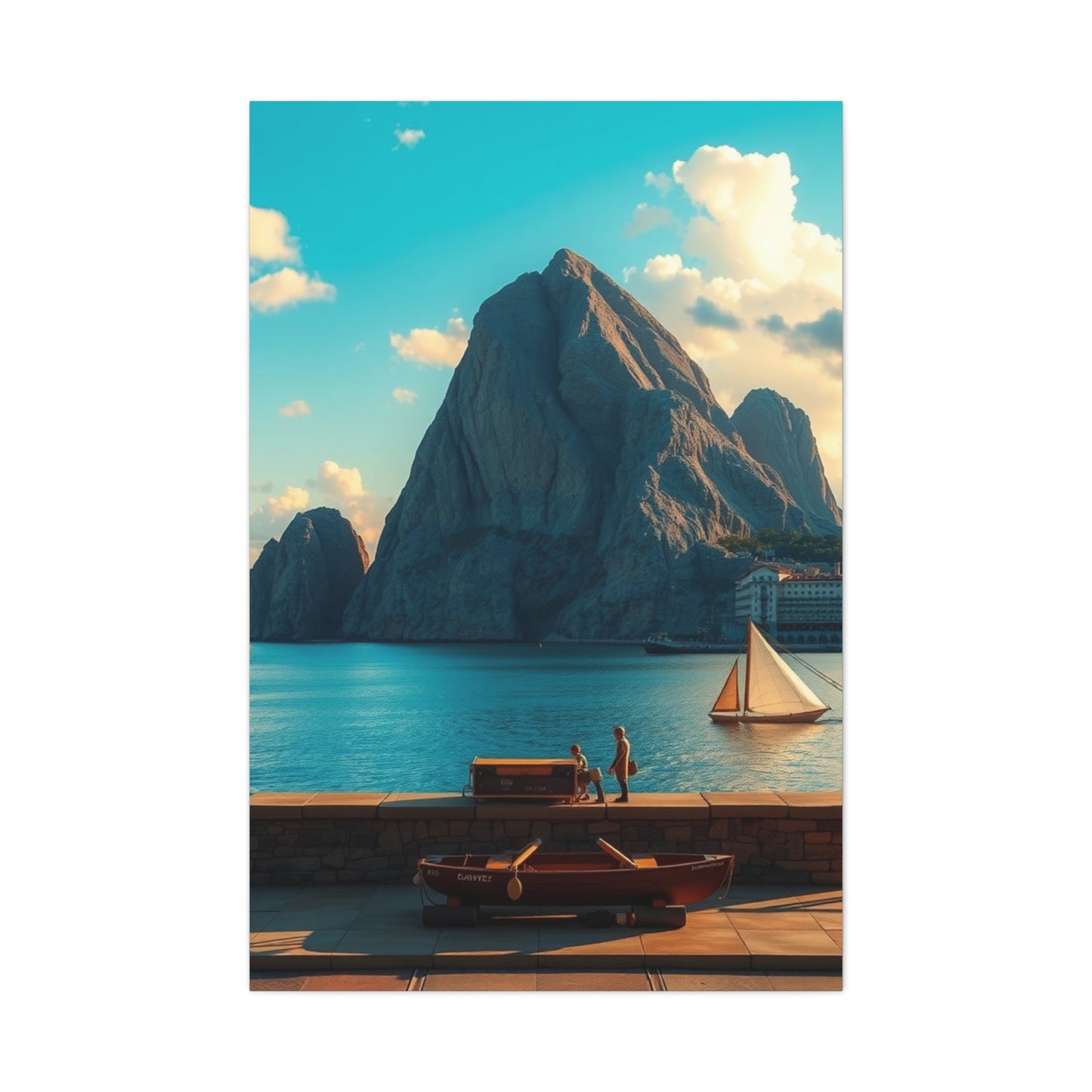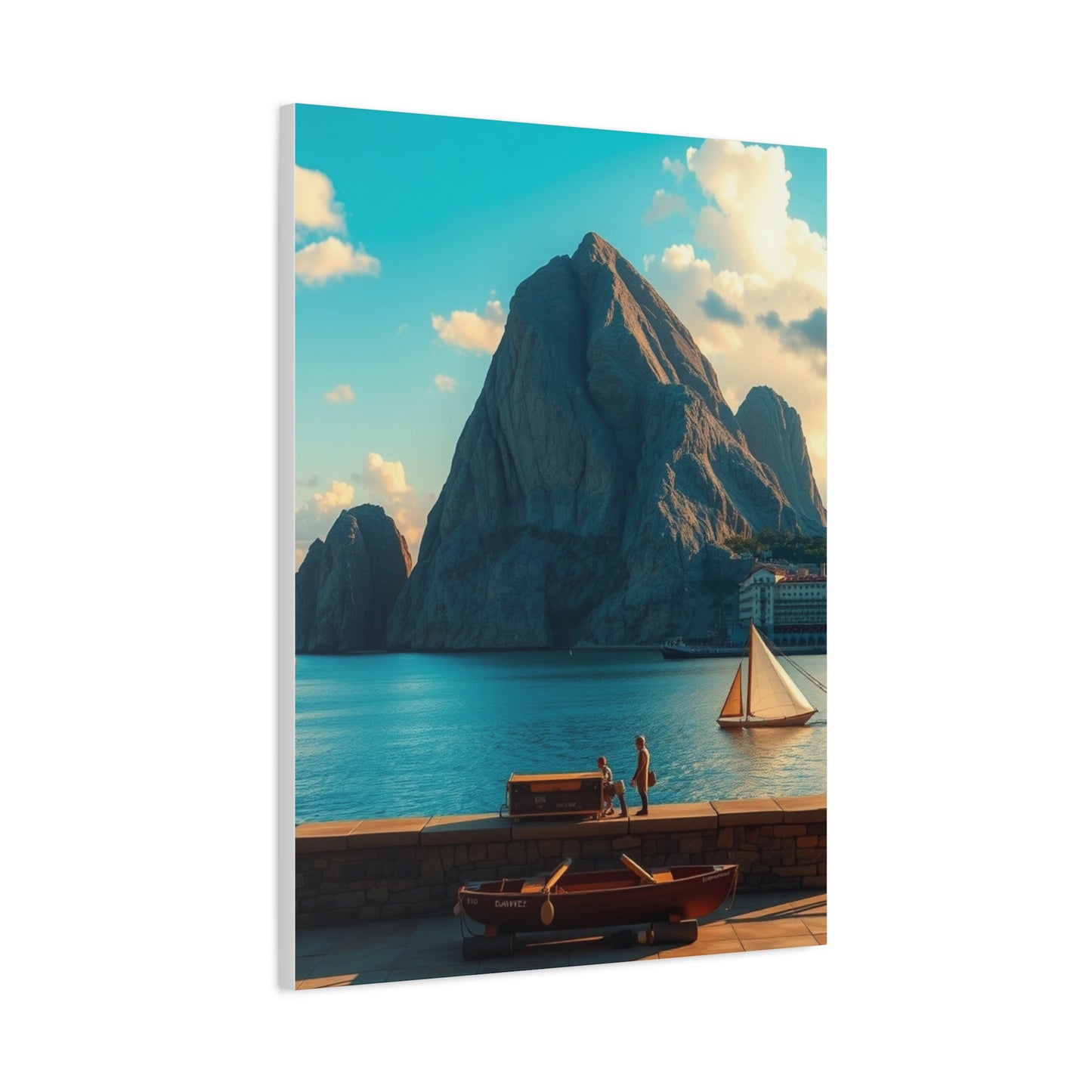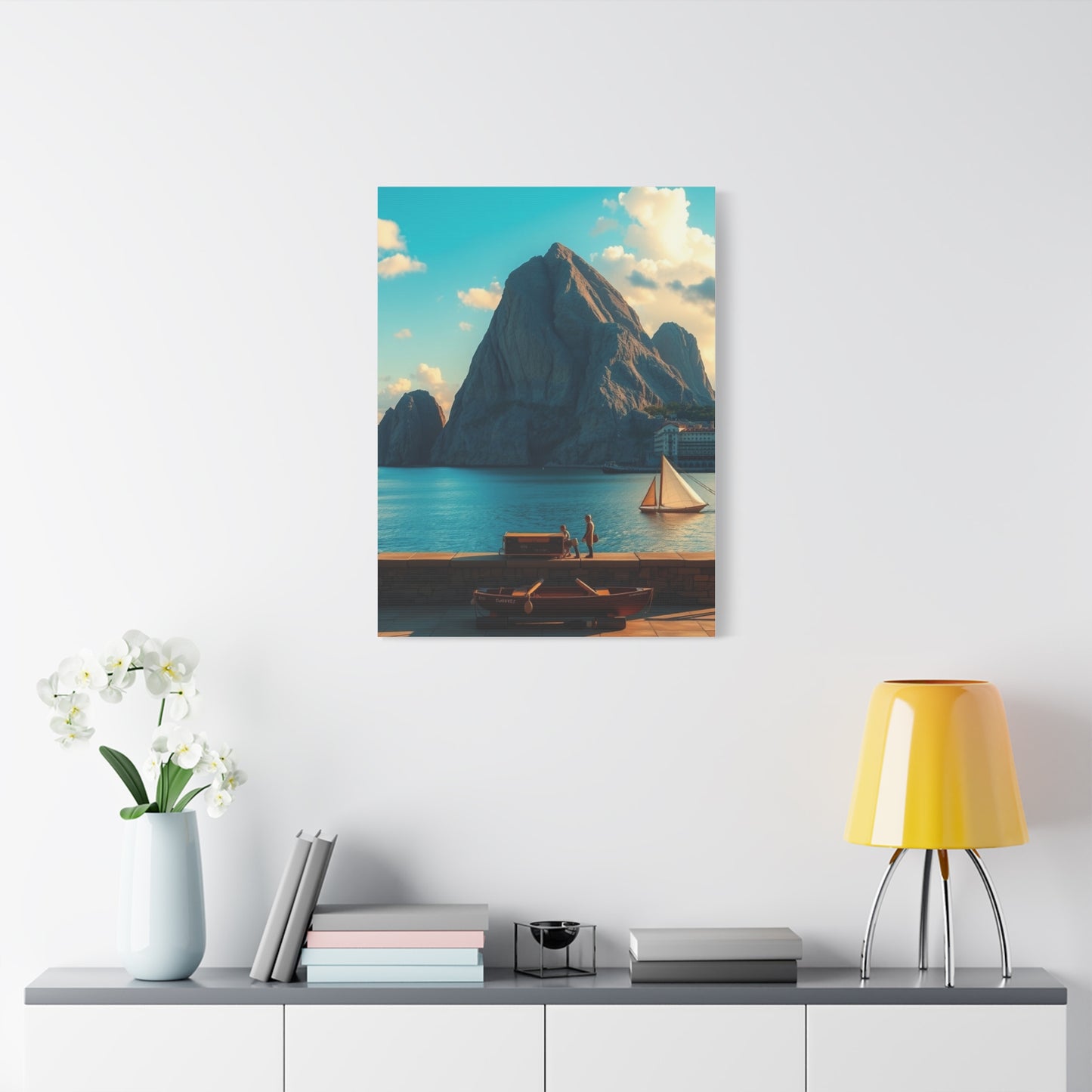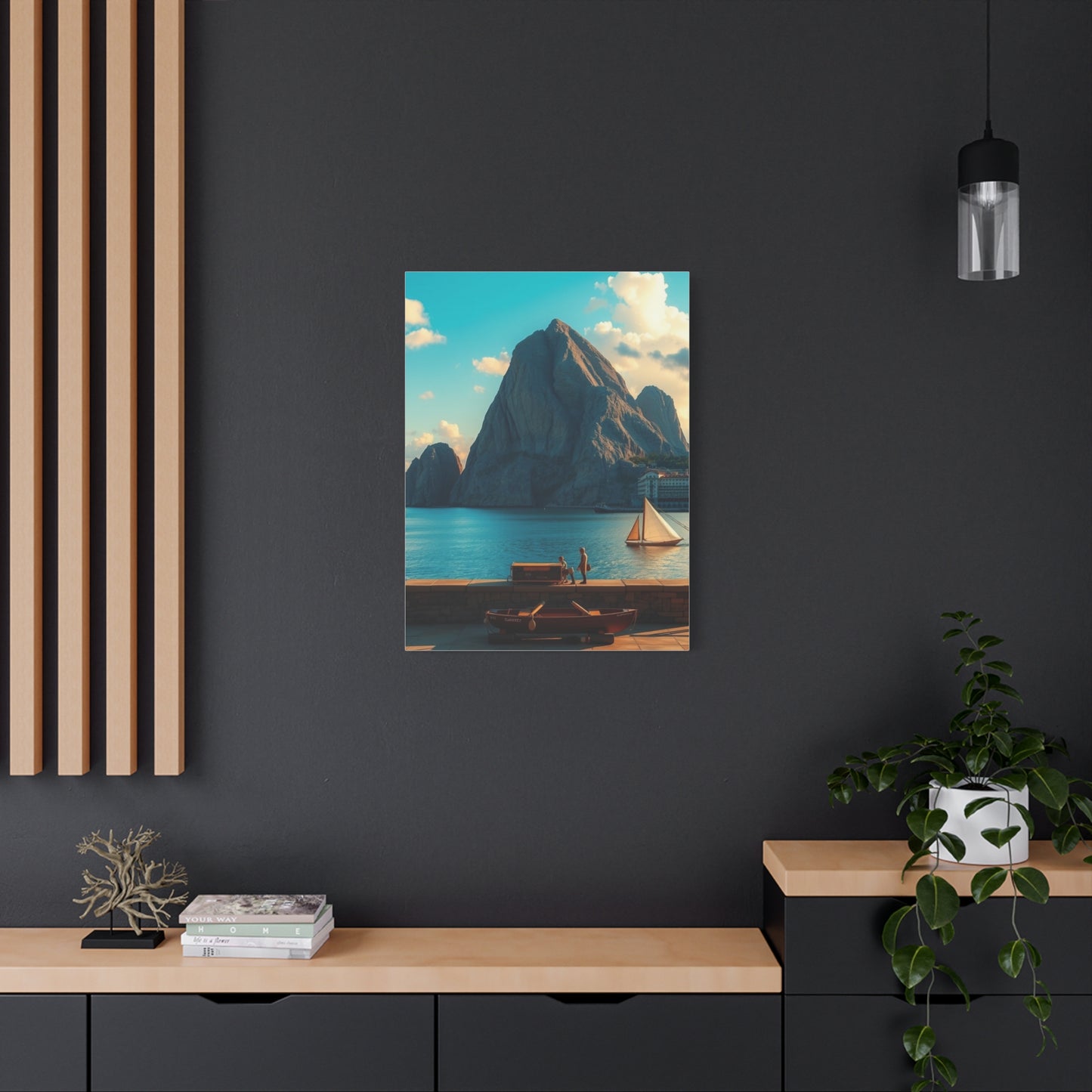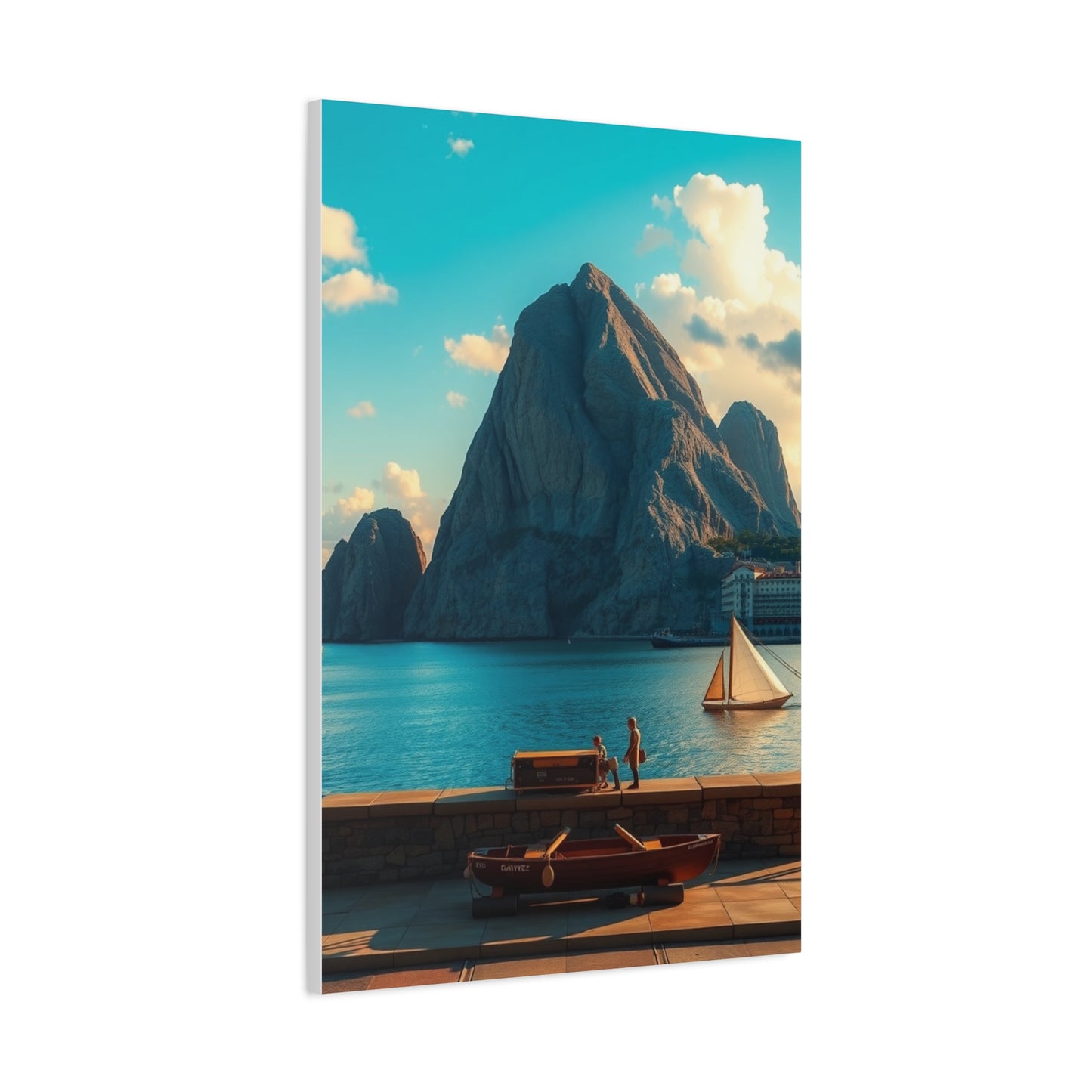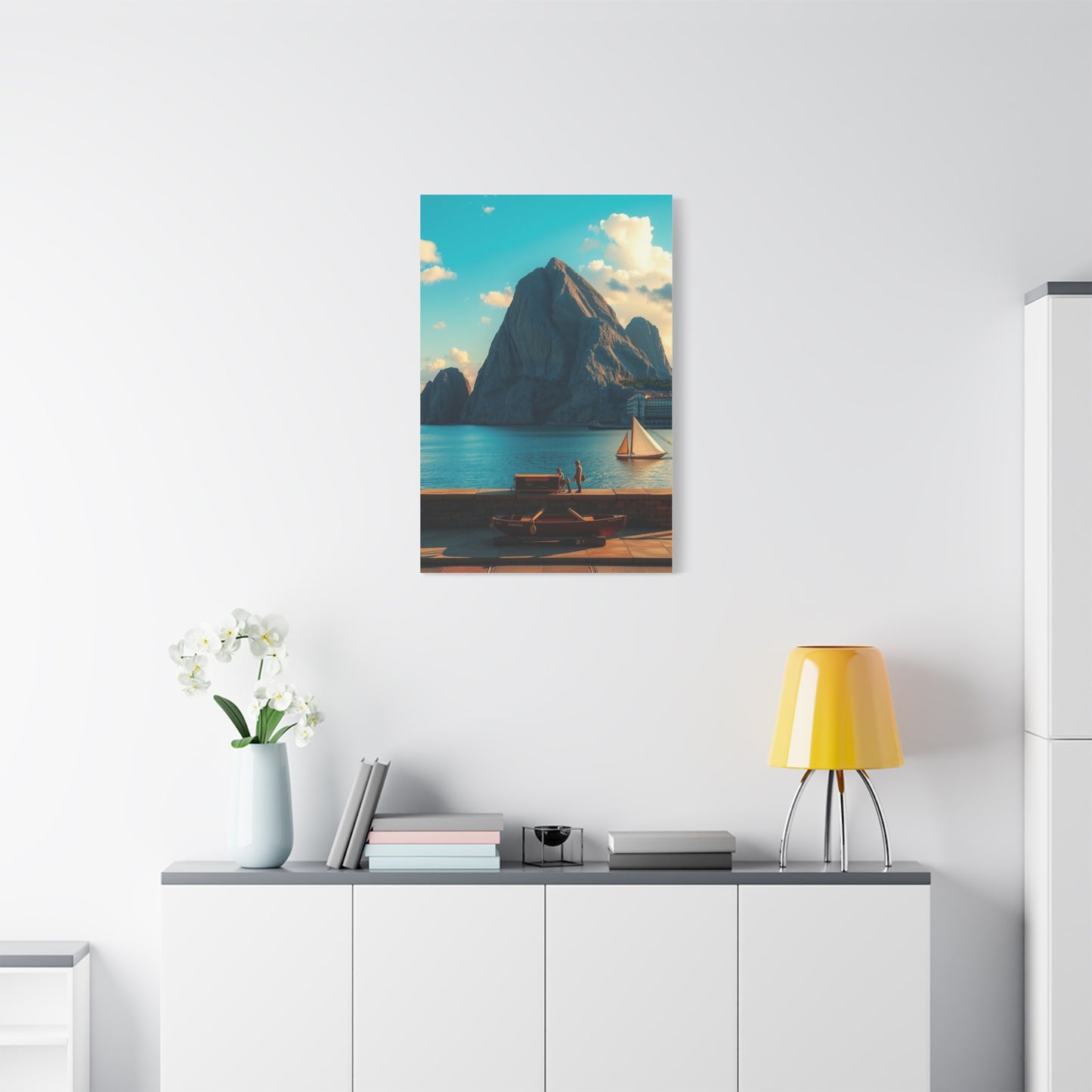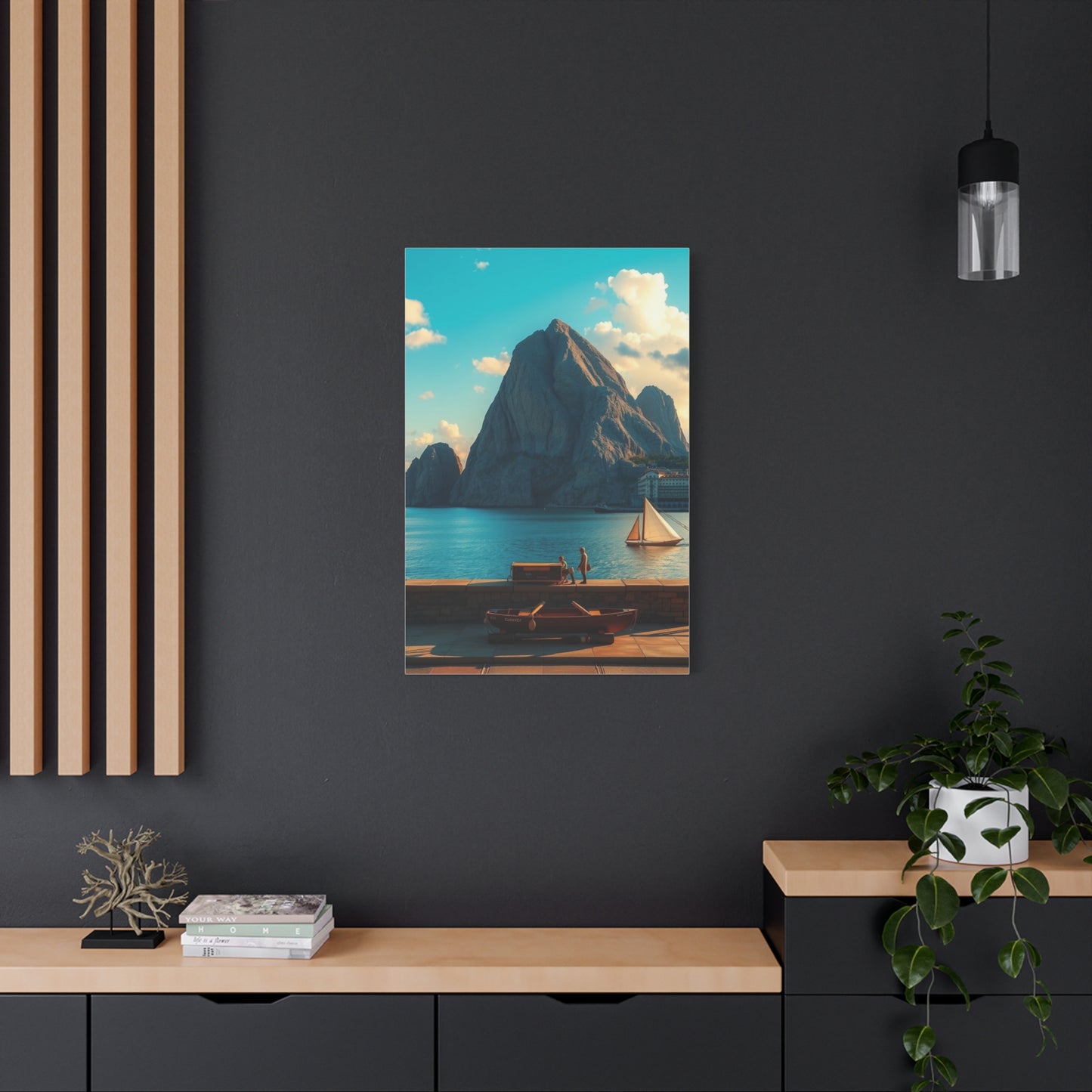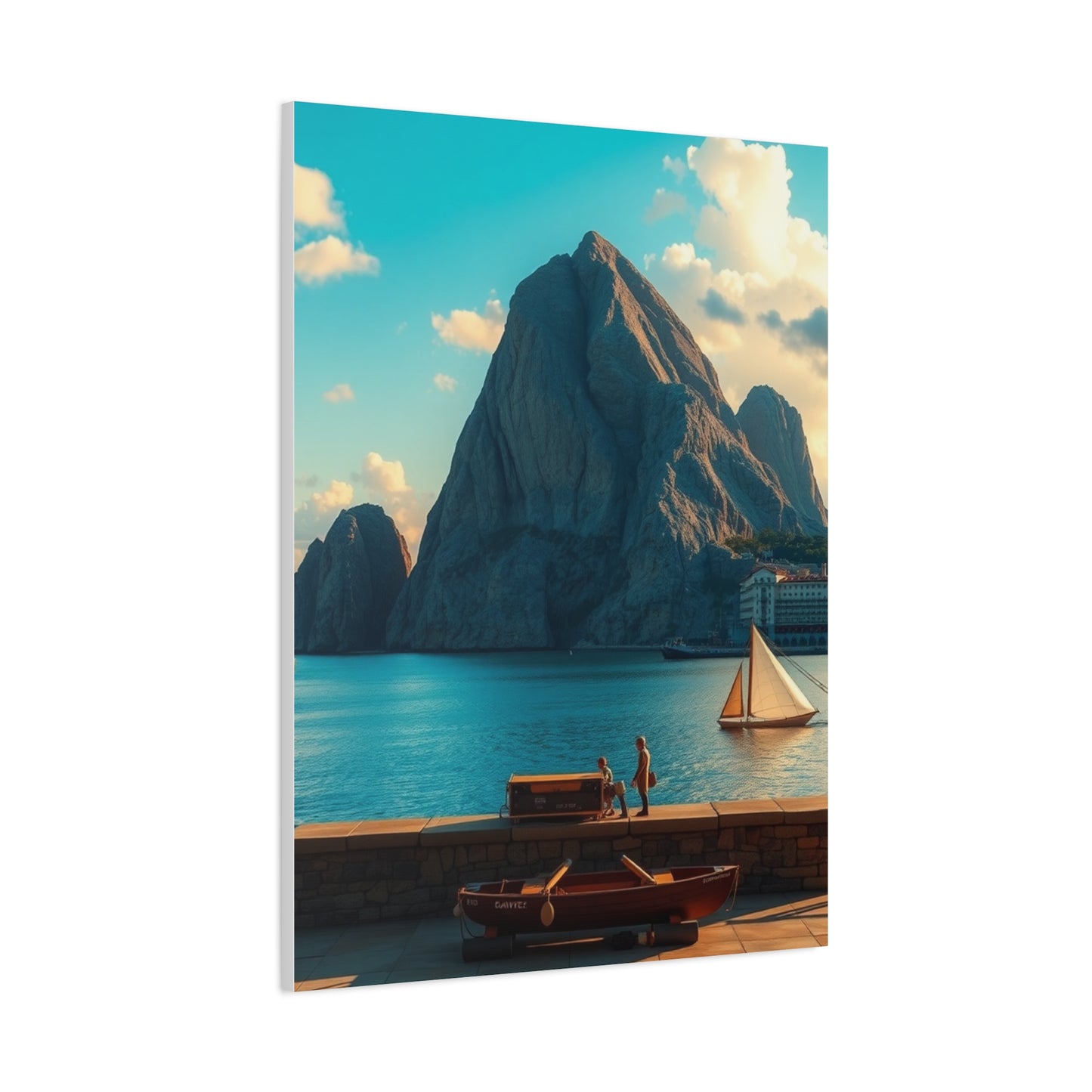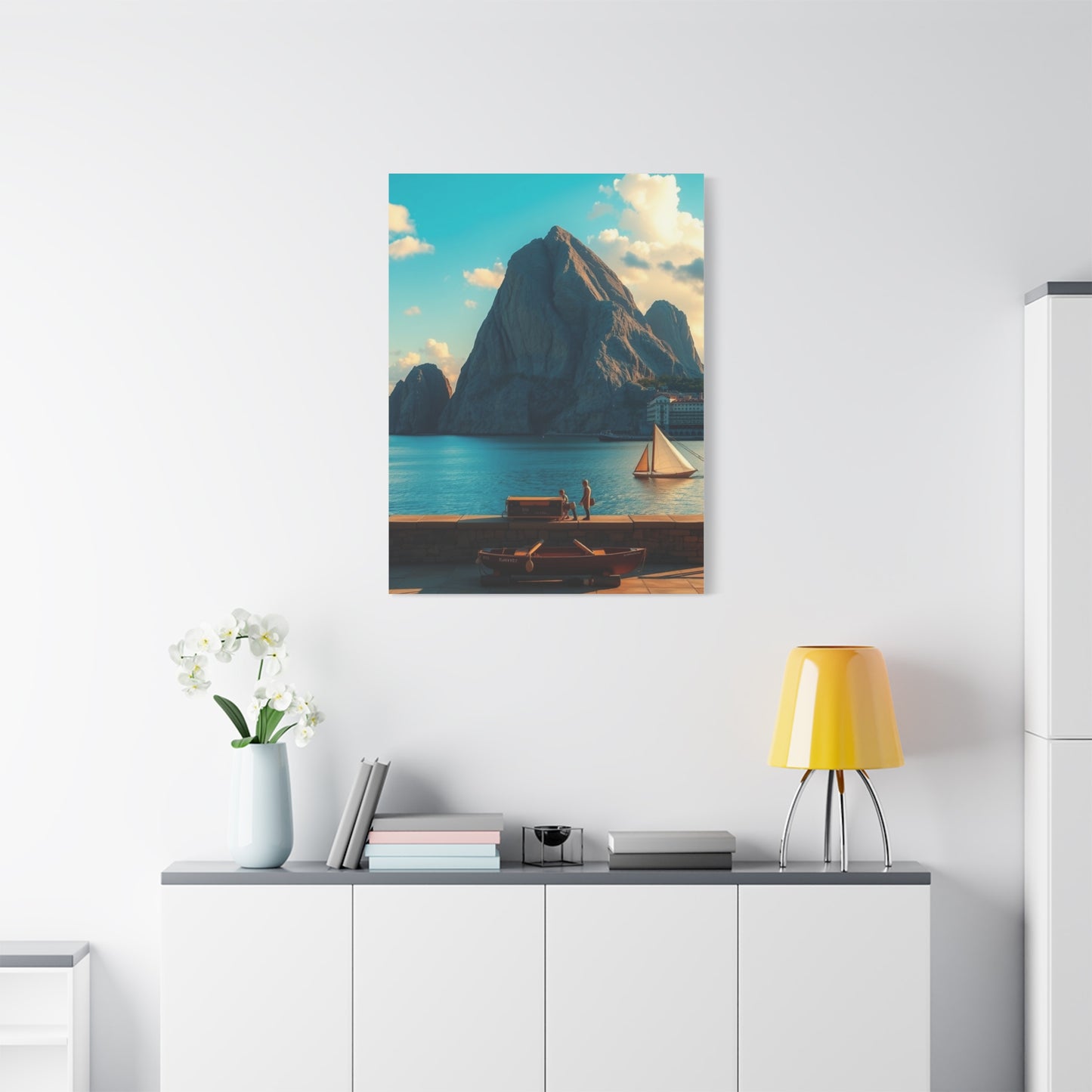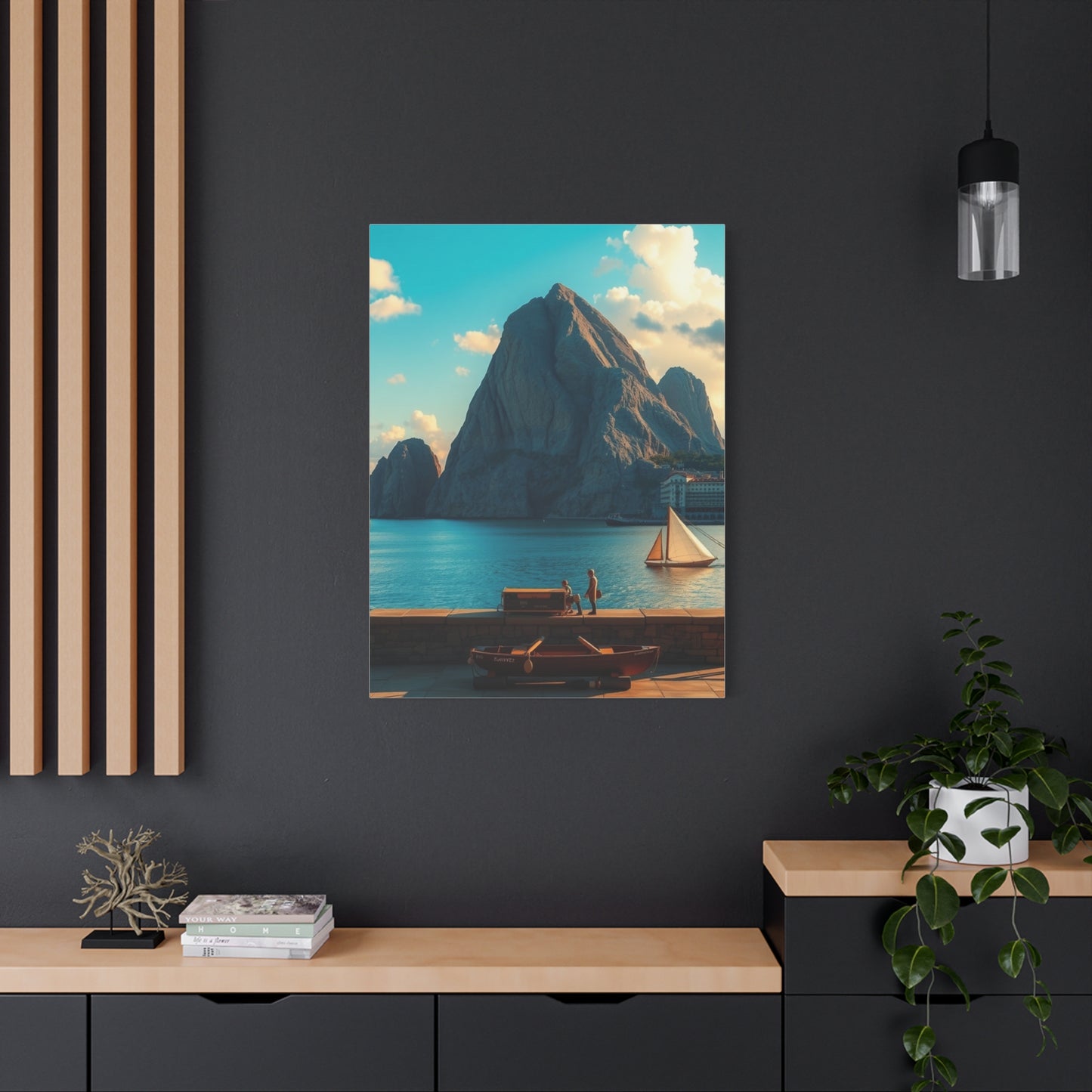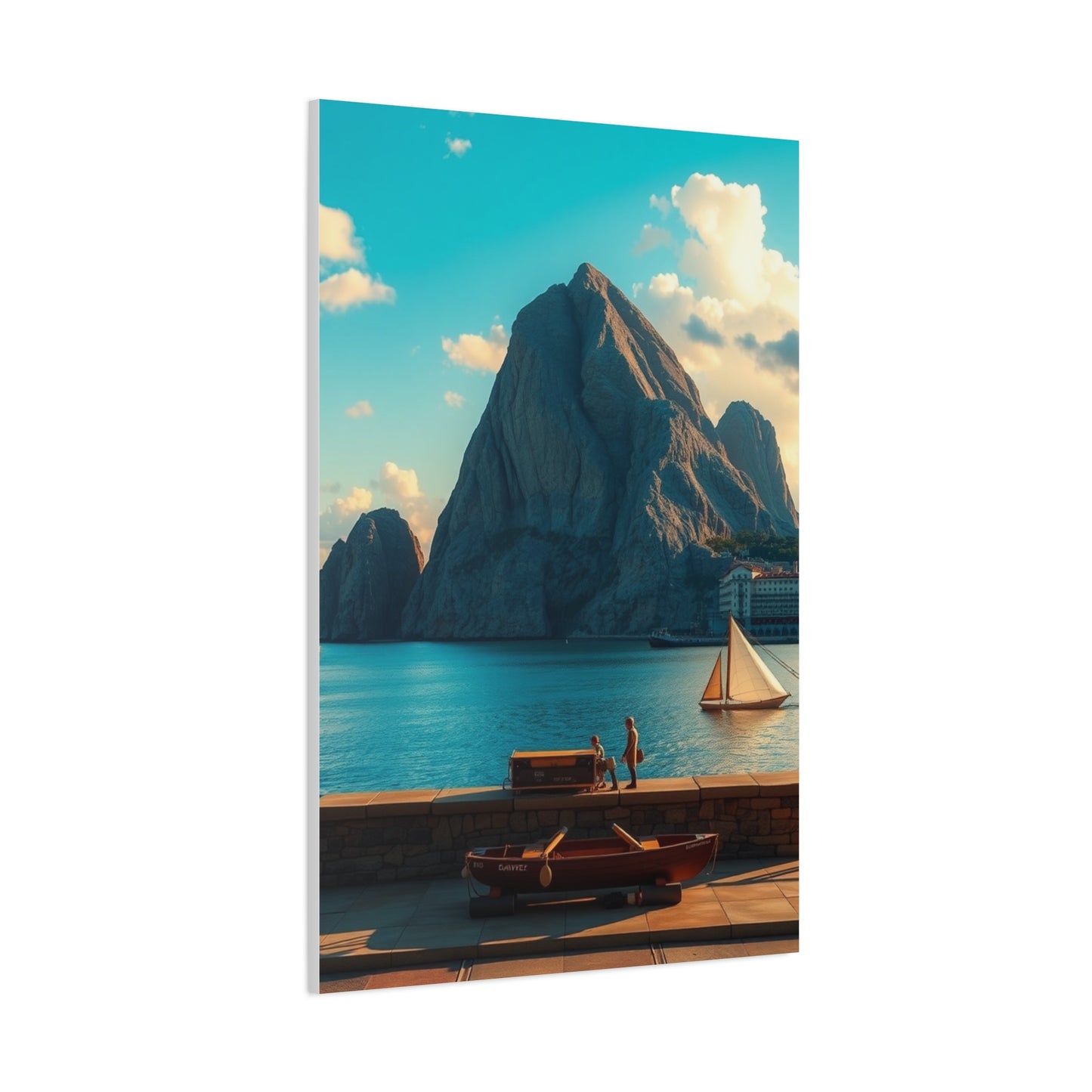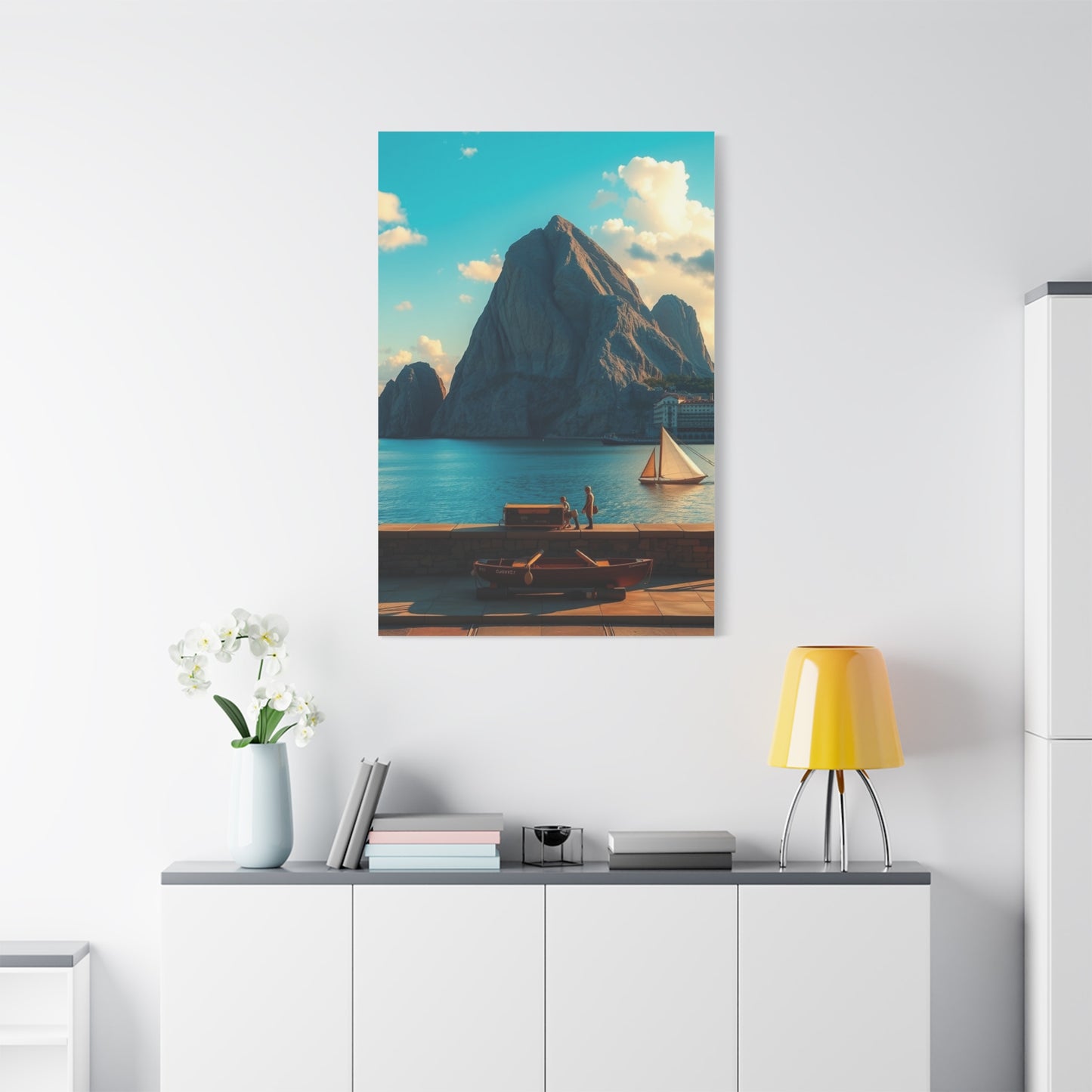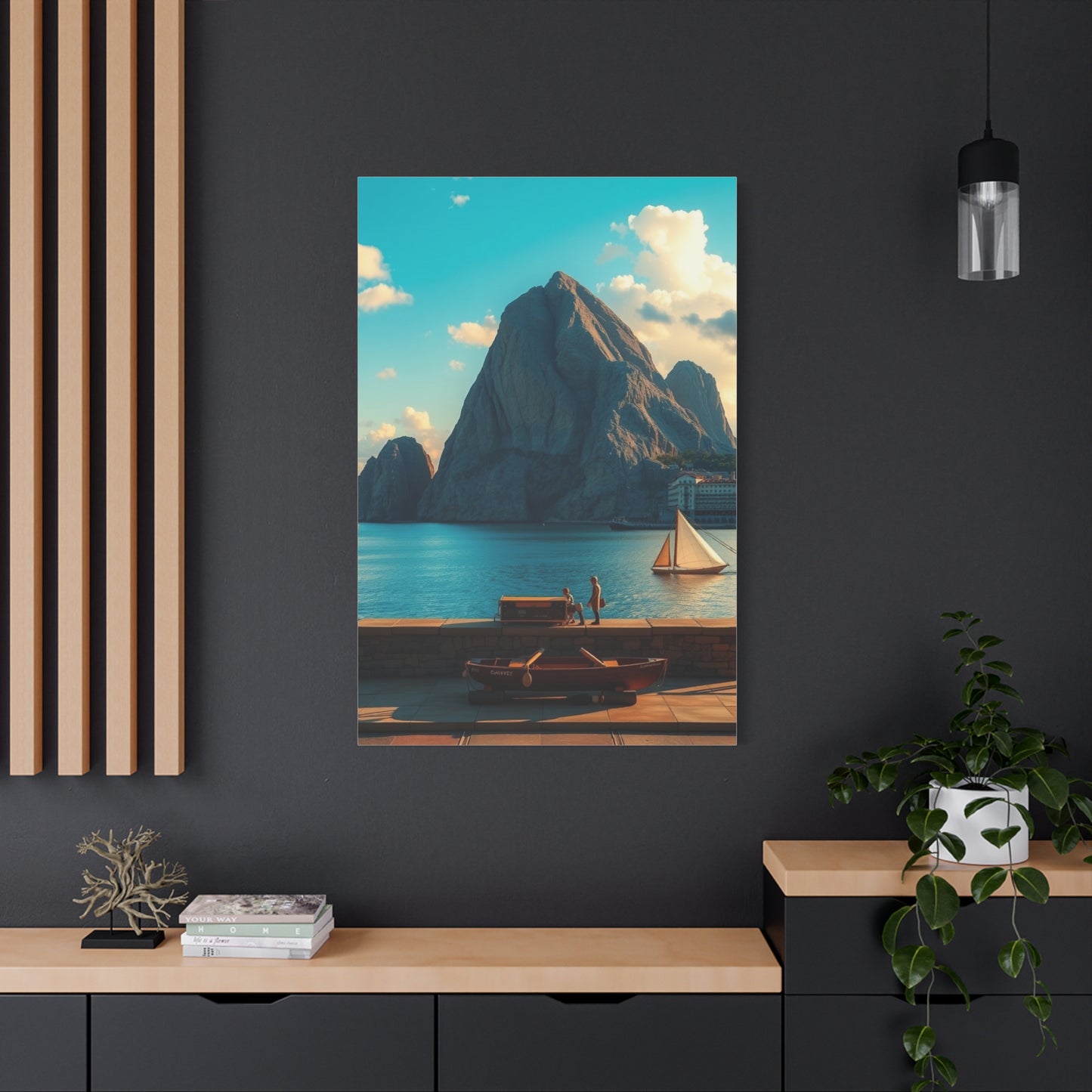The Essence of Refined Canvas Reverie in Contemporary Living
Refined canvas reverie represents a sophisticated approach to decorative artistry that transcends conventional boundaries of visual expression. This artistic philosophy embraces subtle elegance, dreamlike qualities, and thoughtful composition to create wall art that speaks to the soul rather than merely adorning surfaces. Unlike bold, attention-grabbing pieces that demand immediate notice, refined canvas reverie operates on a different wavelength, inviting viewers into moments of contemplation and peaceful reflection.
The concept of refined canvas reverie draws inspiration from various artistic movements, including Impressionism's gentle color palettes, Abstract Expressionism's emotional depth, and contemporary minimalism's appreciation for negative spaces. These influences merge to create artworks that possess an almost ethereal quality, where each brushstroke contributes to an overall sense of tranquility and sophistication.
When we examine the characteristics that define refined canvas reverie wall art, several key elements emerge consistently across different pieces. The color palettes tend toward muted tones, soft pastels, and harmonious combinations that create visual cohesion rather than stark contrasts. The brushwork often appears effortless, with flowing strokes that suggest movement and spontaneity while maintaining careful compositional balance.
The subjects depicted in refined canvas reverie wall art frequently include abstract landscapes, gentle botanical forms, atmospheric cloudscapes, and interpretive representations of natural phenomena. These subjects are rendered with a dreamlike quality that leaves room for personal interpretation, allowing viewers to project their own experiences and emotions onto the artwork.
The psychological impact of refined canvas reverie wall art cannot be understated. Research in environmental psychology has consistently shown that our visual environment significantly influences our mental state, stress levels, and overall well-being. Refined canvas reverie pieces, with their calming color palettes and gentle compositions, contribute to creating environments that promote relaxation, focus, and emotional balance.
Exploring the Philosophy Behind Peaceful Artistic Expression
The philosophy underlying refined canvas reverie wall art extends far beyond mere aesthetic considerations, encompassing deeper questions about the role of art in daily life and its capacity to influence our emotional and psychological well-being. This artistic approach recognizes that in our increasingly fast-paced and digitally saturated world, there exists a profound need for visual experiences that offer respite and contemplation.
Central to this philosophy is the belief that art should serve as a bridge between the external world and our inner landscapes. Refined canvas reverie accomplishes this by creating visual narratives that are simultaneously specific enough to engage the viewer's attention and universal enough to resonate with diverse personal experiences. The artwork becomes a meditation aid, a visual anchor that encourages moments of stillness and reflection in otherwise busy environments.
The concept of reverie itself, borrowed from literary and psychological discourse, refers to a state of dreamy contemplation or fanciful musing. In the context of canvas art, this translates to pieces that invite the viewer to enter a contemplative state, to allow the mind to wander freely while remaining grounded in the present moment through visual engagement with the artwork.
Artists working within this tradition often describe their creative process as intuitive and meditative. Rather than approaching the canvas with rigid preconceptions, they allow the artwork to evolve organically, responding to the interplay of color, form, and texture as it develops. This approach results in pieces that feel authentic and emotionally resonant, carrying within them the artist's own journey of discovery and reflection.
The refined aspect of this artistic philosophy emphasizes sophistication without pretension, elegance without ostentation. It represents a mature approach to visual expression that values subtlety over drama, suggestion over declaration. This refinement is evident not only in the finished artwork but also in the careful consideration given to how the piece will function within its intended environment.
Contemporary neuroscience has provided fascinating insights into how our brains respond to different types of visual stimuli. Studies using neuroimaging techniques have shown that viewing art activates multiple brain regions simultaneously, including areas associated with emotion, memory, and reward processing. Refined canvas reverie wall art, with its emphasis on harmonious composition and gentle visual flow, appears to activate these regions in ways that promote feelings of calm and well-being.
Emotional Resonance in Refined Artworks
The strategic use of color in refined canvas reverie wall art represents one of the most sophisticated aspects of this artistic approach. Color psychology, the study of how different hues affect human behavior and emotional responses, provides the theoretical foundation for understanding why certain color combinations create feelings of tranquility while others generate excitement or tension.
Refined canvas reverie artists typically gravitate toward what psychologists term "cool" and "neutral" color families, including various shades of blue, green, gray, and beige, along with muted versions of warmer tones like dusty rose, soft amber, and pale coral. These colors are associated with natural phenomena that humans instinctively find calming: ocean waters, forest foliage, morning mist, and sunset clouds.
The blue family, particularly prominent in refined canvas reverie pieces, deserves special attention for its psychological effects. Research has consistently shown that blue tones can lower blood pressure, reduce anxiety, and promote feelings of serenity. Different shades of blue evoke different responses: powder blue suggests gentleness and nurturing, while deeper navy tones convey stability and trust. Artists working in the refined canvas reverie tradition often layer multiple blue tones to create depth and visual interest while maintaining the color's calming properties.
Green, another staple of refined canvas reverie palettes, connects viewers to nature's restorative qualities. Sage green, eucalyptus, and soft mint tones are particularly effective in creating environments that feel fresh and rejuvenating without being overly stimulating. The psychological association between green and growth, renewal, and harmony makes it an ideal choice for artworks intended to promote well-being.
Neutral tones play a crucial supporting role in refined canvas reverie compositions. Warm grays, creamy whites, and soft beiges provide visual rest areas that allow the eye to process more saturated colors without becoming overwhelmed. These neutrals also ensure that the artwork can integrate harmoniously with various decorative schemes without competing for attention.
The application of color in refined canvas reverie extends beyond simple color selection to include considerations of saturation, value, and temperature relationships. Subtle gradations between similar hues create visual flow and prevent the jarring contrasts that can disrupt the contemplative quality these pieces are designed to evoke. Artists often employ glazing techniques, layering translucent colors to achieve luminous effects that seem to glow from within the canvas.
Temperature relationships between colors also contribute significantly to the emotional impact of refined canvas reverie pieces. The careful balance of warm and cool tones prevents the artwork from feeling either too sterile or too energetic, instead achieving a harmonious equilibrium that supports extended viewing and contemplation.
The Art of Subtle Composition and Visual Flow
Composition in refined canvas reverie wall art operates according to principles that prioritize visual harmony and emotional resonance over dramatic impact or bold statement-making. This approach requires a sophisticated understanding of how the human eye processes visual information and how compositional choices can guide the viewer's attention while maintaining an overall sense of calm and balance.
The rule of thirds, a fundamental principle of visual composition, takes on new dimensions in refined canvas reverie artworks. Rather than placing focal points at intersection points to create dynamic tension, artists in this tradition often use these guidelines more subtly, allowing important elements to fall near these areas without rigid adherence to the rule. This creates compositions that feel naturally balanced without appearing formulaic or contrived.
Leading lines in refined canvas reverie pieces tend to be gentle curves rather than sharp diagonals, guiding the viewer's eye through the composition in a leisurely, meandering fashion that encourages prolonged engagement. These lines might be suggested through color transitions, the natural flow of brushstrokes, or the implied movement of abstract forms. The goal is to create a visual journey that feels organic and unforced.
Negative space, the areas of the canvas left relatively unoccupied by main compositional elements, plays a particularly important role in refined canvas reverie artworks. These spaces provide visual breathing room and prevent the composition from feeling cluttered or overwhelming. They also serve a psychological function, giving the mind space to rest and process the artwork's more detailed areas.
The concept of visual weight distribution becomes crucial in maintaining the contemplative quality that defines refined canvas reverie. Rather than creating compositions with heavy focal points that dominate the viewer's attention, these artworks distribute visual interest more evenly across the canvas surface. This approach encourages a more meditative viewing experience, where the eye can explore the entire composition without being constantly drawn back to a single dominant element.
Rhythm and repetition in refined canvas reverie compositions operate on subtle frequencies that mirror natural patterns found in environments that humans find inherently soothing. The gentle repetition of brushstrokes, the rhythmic variation of color intensities, and the subtle echoing of forms across the composition create visual harmonies that resonate with our innate appreciation for natural rhythms.
Layering techniques contribute significantly to the visual depth and complexity that characterize sophisticated refined canvas reverie pieces. Artists build up layers of translucent and opaque paint to create surfaces that reward close examination while maintaining their impact when viewed from a distance. This multi-layered approach mirrors the complexity of natural environments, where surface appearances reveal additional details upon closer inspection.
Creating Atmospheric Depth Through Layered
The creation of atmospheric depth represents one of the most challenging and rewarding aspects of producing refined canvas reverie wall art. This technical achievement requires understanding how visual perception works and how various painting techniques can manipulate these perceptual mechanisms to create convincing illusions of depth and atmosphere.
Atmospheric perspective, a natural phenomenon where distant objects appear lighter, less saturated, and less distinct than near objects, provides the theoretical foundation for creating depth in refined canvas reverie pieces. Artists recreate this effect through careful manipulation of color temperature, value relationships, and edge quality across different areas of the composition.
Temperature relationships play a crucial role in establishing atmospheric depth. Warm colors tend to advance toward the viewer, while cool colors recede into the background. Refined canvas reverie artists exploit this perceptual tendency by gradually cooling color temperatures as compositional elements move toward the background, creating convincing depth effects that enhance the dreamy, ethereal quality of the artwork.
Value gradations, the relationships between light and dark areas within the composition, contribute significantly to atmospheric depth effects. Subtle value changes can suggest the presence of atmospheric haze or the filtering effect of distance, while more dramatic value contrasts can bring certain elements forward in the visual field. The key lies in maintaining overall harmony while using these value relationships to guide the viewer's perception of spatial relationships.
Edge quality manipulation represents another sophisticated technique for creating atmospheric depth in refined canvas reverie pieces. Sharp, well-defined edges tend to advance toward the viewer, while soft, diffused edges suggest distance or atmospheric interference. Artists working in this tradition often vary edge quality throughout their compositions, using sharp edges to define focal areas and soft edges to suggest receding elements.
Overlapping forms provide clear depth cues that viewers intuitively understand, but in refined canvas reverie artworks, these overlapping relationships are often suggested rather than explicitly stated. Partial overlaps, where forms intersect but maintain some ambiguity about their spatial relationships, contribute to the dreamlike quality that characterizes this artistic approach.
Color saturation gradients create subtle but effective depth cues, with highly saturated colors appearing closer to the viewer and desaturated colors suggesting greater distance. This technique requires careful color mixing to achieve smooth transitions that maintain the harmonious quality essential to refined canvas reverie aesthetics.
The layering of transparent and semi-transparent paint applications builds up complex surface textures that contribute to atmospheric effects. Each layer adds depth to the color relationships while creating subtle variations in surface reflection that mimic the complex light interactions found in natural atmospheric conditions.
The Role of Texture in Refined Artistic Expression
Texture in refined canvas reverie wall art operates on multiple levels, contributing both tactile and visual interest while maintaining the sophisticated, contemplative quality that defines this artistic approach. Understanding how texture functions in these artworks provides insight into the complex relationship between technique, aesthetics, and emotional response.
Physical texture, created through the application of paint in varying thicknesses and the use of different painting tools, adds tactile interest that invites closer examination. However, in refined canvas reverie pieces, this texture is typically subtle and harmonious rather than dramatic or attention-grabbing. Artists might use palette knives to create gentle impasto effects in focal areas while maintaining smooth surfaces in transitional zones.
Implied texture, suggested through brushwork patterns and color relationships rather than actual surface variation, plays an equally important role in refined canvas reverie aesthetics. The suggestion of fabric textures, water surfaces, or atmospheric phenomena through careful brush handling creates visual interest while maintaining the smooth, contemplative surfaces that encourage meditative viewing.
Brushstroke quality becomes a form of textural expression in refined canvas reverie artworks. The rhythm and direction of brushstrokes can suggest movement, energy, or calm depending on their application. Smooth, flowing strokes contribute to peaceful, meditative qualities, while more varied stroke patterns can add visual interest without disrupting overall harmony.
The interaction between different types of texture within a single composition requires careful consideration to maintain the unified aesthetic that characterizes refined canvas reverie pieces. Contrasting textures can create focal points and add visual interest, but these contrasts must be balanced to avoid disrupting the contemplative quality of the artwork.
Surface preparation affects the final textural qualities of refined canvas reverie pieces. Smooth, well-prepared surfaces allow for subtle textural effects that might be lost on rougher canvases, while slightly textured grounds can add character without overwhelming delicate brushwork. The choice of surface preparation should align with the intended final aesthetic of the artwork.
Medium additives can modify paint texture and working properties, enabling artists to achieve specific textural effects that support the refined canvas reverie aesthetic. Gel mediums can add body to paint for subtle impasto effects, while flow aids can create smooth, seamless applications. These technical choices contribute to the overall success of the finished artwork.
Botanical and Natural Motifs in Dreamlike Compositions
The incorporation of botanical and natural motifs in refined canvas reverie wall art creates powerful connections between viewers and the natural world while maintaining the sophisticated, contemplative aesthetic that defines this artistic approach. These natural elements provide familiar reference points that ground abstract compositions in recognizable imagery while allowing for interpretive freedom that encourages personal connection.
Floral imagery in refined canvas reverie pieces typically emphasizes form, color, and atmospheric quality over botanical accuracy. Roses might be suggested through soft pink forms and gentle curves rather than detailed petal structures, while tree forms might appear as vertical elements with organic branching patterns rather than specific species representations. This approach allows the natural elements to function as emotional and aesthetic components rather than documentary illustrations.
Leaf patterns and foliage create opportunities for exploring rhythm, repetition, and organic flow within refined canvas reverie compositions. The natural branching patterns found in plant structures provide compositional frameworks that feel inherently harmonious to human viewers, who have evolved to find these patterns aesthetically pleasing. Artists can abstract these natural forms while retaining their essential character and emotional resonance.
Water imagery appears frequently in refined canvas reverie pieces, often suggested through horizontal bands of color, gentle wave-like forms, or areas of smooth color transition that evoke the reflective qualities of calm water surfaces. These water elements contribute to the peaceful, meditative quality of the artworks while providing opportunities for exploring light effects and color relationships.
Sky and cloud formations offer rich opportunities for creating atmospheric depth and emotional resonance in refined canvas reverie compositions. The soft, amorphous forms of clouds translate naturally into abstract painting techniques, while their association with weather, mood, and natural cycles creates emotional connections that enhance the viewer's engagement with the artwork.
Seasonal references can be suggested through color choices and compositional elements without explicit representation. Spring qualities might be evoked through fresh green tones and upward-reaching forms, while autumn characteristics could appear through warm color palettes and suggestions of falling or resting elements. These seasonal associations tap into deep emotional memories and cultural associations that enhance the artwork's impact.
The stylization of natural motifs in refined canvas reverie requires balancing recognizability with abstraction. Elements should be familiar enough to evoke natural associations while remaining open to interpretation and personal projection. This balance allows the artwork to function as both decoration and meditation aid, providing visual interest while supporting contemplative viewing experiences.
Abstract Landscapes and Atmospheric Scenes
Abstract landscapes represent one of the most successful applications of refined canvas reverie principles, offering viewers familiar compositional structures while allowing for creative interpretation and emotional projection. These pieces capture the essence of natural environments without becoming bound to literal representation, creating artworks that function as windows to imagined or remembered places.
Horizon lines in abstract landscape compositions provide psychological anchoring points that create stability and reference within otherwise fluid, interpretive imagery. These horizons might be suggested through color transitions, value changes, or subtle textural shifts rather than explicit linear elements. The placement of these implied horizons affects the emotional character of the artwork, with high horizons creating intimate, grounded feelings and lower horizons suggesting expansiveness and freedom.
Color relationships in abstract landscapes often reference specific times of day or atmospheric conditions without literal representation. Dawn colors might appear through warm pink and gold tones, while storm atmospheres could be suggested through dramatic value contrasts and cool color dominance. These atmospheric references create emotional resonance that connects viewers to their own experiences of natural environments.
Scale relationships within abstract landscape compositions can suggest various environmental types and emotional responses. Intimate scales that suggest close natural views create feelings of protection and contemplation, while expansive scales that imply vast landscapes evoke feelings of freedom and possibility. Artists can manipulate these scale relationships through compositional choices and brushwork character.
Layering techniques become particularly effective in abstract landscape compositions, where multiple atmospheric elements can be suggested through overlapping transparent and opaque paint applications. Distant mountains might be suggested through pale, cool colors, while foreground elements could be rendered with warmer, more saturated tones and sharper edges.
Weather implications in abstract landscapes add emotional depth and interpretive possibilities to refined canvas reverie pieces. Suggestions of mist, rain, or clear skies through brushwork character and color choices create atmospheric conditions that viewers can experience emotionally without explicit representation. These weather implications also provide opportunities for exploring various painting techniques and their expressive possibilities.
The integration of multiple landscape elements within single compositions requires careful attention to visual balance and emotional coherence. Mountain forms, water surfaces, vegetation suggestions, and sky areas must work together to create unified compositions that support the contemplative viewing experience essential to refined canvas reverie aesthetics.
Selecting the Perfect Canvas Size and Format
The selection of appropriate canvas size and format represents a crucial decision that significantly impacts the effectiveness of refined canvas reverie wall art in its intended environment. Understanding the relationship between artwork dimensions, viewing distances, and spatial contexts enables optimal aesthetic and psychological results.
Viewing distance calculations help determine appropriate artwork sizes for specific locations. Artworks intended for close viewing, such as pieces placed in reading nooks or above desks, can effectively function at smaller sizes where viewers can appreciate detailed brushwork and subtle color relationships. Conversely, pieces intended for larger rooms require sufficient size to maintain visual presence without becoming lost in the surrounding environment.
Room proportion relationships ensure that artwork dimensions complement rather than compete with architectural elements. A piece that is too small for its wall space will appear insignificant and fail to create the desired atmospheric impact, while oversized pieces can overwhelm their surroundings and disrupt the peaceful quality that refined canvas reverie artworks are designed to promote.
Horizontal versus vertical orientation choices affect both the visual impact and emotional character of refined canvas reverie pieces. Horizontal formats tend to suggest landscape references and create calming, stabilizing effects, while vertical formats can suggest growth, aspiration, and upward movement. The choice should align with both the intended location and the desired emotional impact of the artwork.
Series considerations become important when multiple refined canvas reverie pieces will be displayed together. Consistent sizing creates visual harmony and allows individual pieces to function as components of a larger aesthetic statement. However, varied sizes can create dynamic relationships that add visual interest while maintaining overall unity through consistent style and color relationships.
Golden ratio applications, based on mathematical relationships found throughout nature, can guide size selections that feel inherently harmonious to viewers. These proportional relationships create visual satisfaction that operates below conscious awareness, contributing to the overall effectiveness of refined canvas reverie pieces in promoting psychological well-being.
Framing considerations affect the apparent size and visual impact of refined canvas reverie artworks. Frame styles and proportions should complement the artwork without competing for attention, while frame colors and finishes should support the overall aesthetic goals of the piece. The choice between traditional framing and contemporary hanging methods also affects how viewers perceive and interact with the artwork.
Lighting Considerations for Optimal Display
Proper lighting represents a critical factor in maximizing the aesthetic and emotional impact of refined canvas reverie wall art. Understanding how different lighting conditions affect color perception, texture visibility, and overall viewing experience enables optimal presentation of these sophisticated artworks.
Natural lighting variations throughout the day create changing appearances in refined canvas reverie pieces, with different times of day revealing various aspects of color relationships and surface textures. Morning light tends to enhance cool color elements, while afternoon and evening light can bring out warmer tones and create different emotional responses to the same artwork.
Artificial lighting selection requires consideration of color temperature, intensity, and distribution patterns. LED lights with adjustable color temperatures allow for fine-tuning of the viewing experience, while track lighting systems provide flexible positioning options that can accommodate different artwork sizes and hanging configurations.
Glare prevention becomes particularly important with refined canvas reverie pieces, where subtle color relationships and surface textures can be obscured by harsh reflections. Proper lighting angle selection and the use of anti-reflective glass when framing can minimize glare issues while maintaining optimal color visibility and surface texture appreciation.
Color rendering index considerations ensure that artificial lighting accurately represents the artist's intended color relationships. High-quality lighting with excellent color rendering capabilities prevents color distortion that could significantly alter the emotional impact of refined canvas reverie artworks.
Dimming capabilities provide flexibility for different viewing contexts and times of day. The ability to adjust lighting intensity allows viewers to create optimal conditions for contemplative viewing while accommodating various activities that might occur in the same environment.
UV protection prevents long-term color fading and canvas deterioration that can compromise the lasting beauty of refined canvas reverie pieces. Proper UV filtering in both natural and artificial lighting systems preserves the artwork's original colors and extends its lifespan significantly.
Room Integration and Placement Strategies
Successful integration of refined canvas reverie wall art into living environments requires thoughtful consideration of spatial relationships, color coordination, and functional requirements. Understanding these integration principles ensures that artworks enhance their environments while achieving maximum aesthetic and psychological impact.
Wall selection affects both the visibility and contextual impact of refined canvas reverie pieces. Walls that receive appropriate lighting without direct sunlight exposure provide ideal conditions for artwork display, while walls in high-traffic areas might benefit from larger pieces that can maintain visual presence despite surrounding activity.
Height placement guidelines ensure optimal viewing angles and visual integration with surrounding furnishings. Generally, artworks should be positioned so that their centers align with average eye height when viewers are in their typical positions within the room. This might mean adjusting for whether viewers will primarily be standing or seated when viewing the artwork.
Color coordination between refined canvas reverie artworks and existing decorative elements requires careful attention to both harmony and contrast relationships. Artworks can either complement existing color schemes by incorporating similar tones or provide gentle contrast through carefully selected accent colors that add visual interest without creating discord.
Furniture relationships affect both the visual balance and functional success of artwork placement. Pieces hung above seating areas should be sized and positioned to create pleasing proportional relationships, while artworks in dining areas should be positioned to be visible and appreciated during meals without overwhelming the dining experience.
Architectural feature integration allows refined canvas reverie pieces to enhance existing spatial qualities rather than competing with them. Artworks can emphasize positive architectural elements while minimizing attention to less desirable features through strategic placement and sizing decisions.
Multiple piece arrangements require consideration of both individual artwork qualities and their combined visual impact. Consistent spacing, alignment, and proportional relationships create unified presentations that enhance the contemplative quality characteristic of refined canvas reverie aesthetics.
Seasonal Adaptations and Flexible Display Options
The ability to adapt refined canvas reverie wall art displays to changing seasons and evolving aesthetic preferences adds versatility and long-term satisfaction to these artistic investments. Understanding various approaches to flexible display enables ongoing enjoyment and fresh perspectives on treasured artworks.
Seasonal color relationships can be enhanced through strategic artwork rotation that emphasizes different pieces during various times of year. Cool-toned refined canvas reverie pieces might take prominence during summer months, while warmer-toned works could be featured during autumn and winter seasons.
Lighting adjustments can dramatically alter the appearance and emotional impact of refined canvas reverie artworks without requiring physical changes to the pieces themselves. Warmer lighting temperatures during winter months can enhance cozy, contemplative feelings, while cooler lighting during summer can emphasize refreshing, calming qualities.
Accessory coordination allows for subtle environmental changes that refresh the presentation of refined canvas reverie pieces without major redecorating efforts. Seasonal flowers, textile changes, or small decorative objects can create new contextual relationships that reveal different aspects of familiar artworks.
Gallery wall concepts enable sophisticated display options that can accommodate multiple refined canvas reverie pieces while allowing for periodic rearrangement and fresh combinations. These flexible arrangements can evolve over time while maintaining overall aesthetic coherence.
Storage solutions for artwork rotation should protect pieces from damage while keeping them accessible for periodic display changes. Proper storage conditions preserve artwork quality and extend the lifespan of refined canvas reverie pieces that might not be on constant display.
Digital documentation of various display arrangements helps track successful combinations and provides reference for recreating effective presentations after changes. Photography of different arrangements also allows for sharing ideas with others and maintaining records of evolving aesthetic preferences.
The Market for Refined Canvas Reverie Artworks
Understanding the current market for refined canvas reverie wall art provides valuable context for both collectors and artists interested in this sophisticated artistic approach. Market trends, pricing factors, and collector preferences shape the availability and development of new works in this category.
Contemporary demand for refined canvas reverie pieces reflects broader cultural trends toward mindfulness, wellness-focused living, and sophisticated home environments. As people spend increasing time in their homes and prioritize mental health and well-being, artworks that contribute to peaceful, contemplative environments gain greater appreciation and market value.
Price factors for refined canvas reverie artworks include artist reputation, artwork size, technical complexity, and scarcity considerations. Original pieces by established artists command premium prices, while emerging artists often offer excellent value for collectors willing to develop relationships with developing talents.
Authentication and provenance considerations become important when investing in refined canvas reverie pieces, particularly works by established artists. Proper documentation ensures long-term value preservation and provides important information about the artwork's creation and ownership history.
Investment potential for refined canvas reverie artworks depends on various factors including artist career trajectory, artwork quality, and broader market trends. While these pieces are typically purchased for their aesthetic and emotional value, understanding investment considerations can inform purchasing decisions.
Emerging artists in the refined canvas reverie tradition often offer innovative approaches to established techniques while maintaining the essential qualities that define this artistic category. Supporting emerging talents provides opportunities to acquire significant works at accessible price points while contributing to artistic development.
Gallery representation and exhibition opportunities help establish artist reputations and increase artwork visibility within the refined canvas reverie market. Understanding the gallery system and exhibition practices provides insight into how these artworks gain recognition and market acceptance.
Care and Preservation of Canvas Artworks
Proper care and preservation of refined canvas reverie wall art ensures that these valuable pieces maintain their beauty and emotional impact for generations. Understanding conservation principles and practical maintenance approaches protects artistic investments while preserving their ability to enhance living environments.
Environmental controls play crucial roles in artwork preservation. Temperature and humidity fluctuations can cause canvas expansion and contraction that leads to paint cracking or canvas warping. Maintaining stable environmental conditions prevents these damaging changes while preserving the subtle color relationships that define refined canvas reverie aesthetics.
Dust accumulation can gradually dull colors and obscure surface textures in refined canvas reverie pieces. Regular gentle cleaning with appropriate tools and techniques removes accumulated dust without damaging paint surfaces or canvas materials. Professional conservation advice should be sought for valuable pieces or when significant cleaning is required.
UV protection prevents fading and color shifts that can significantly alter the appearance of refined canvas reverie artworks. Window films, UV-filtering glass in frames, and strategic placement away from direct sunlight exposure provide effective protection against damaging ultraviolet radiation.
Handling procedures minimize the risk of accidental damage during moving, cleaning, or display adjustment activities. Proper lifting techniques, protective materials, and careful planning prevent tears, punctures, or other physical damage that could compromise artwork integrity.
Professional conservation services become necessary when refined canvas reverie pieces show signs of damage or aging that require expert intervention. Understanding when to seek professional help and how to select qualified conservators ensures that valuable artworks receive appropriate care.
Documentation practices help maintain records of artwork condition, conservation treatments, and display history. These records prove valuable for insurance purposes, resale considerations, and ongoing preservation planning throughout the artwork's lifetime.
Digital Integration and Modern Display Technologies
Contemporary technology offers new possibilities for displaying and interacting with refined canvas reverie wall art while maintaining the essential aesthetic and emotional qualities that define this artistic approach. Understanding these technological options enables innovative presentations that enhance rather than compromise traditional artistic values.
Digital frames and displays can showcase collections of refined canvas reverie artworks in rotation while maintaining high-quality color reproduction and appropriate sizing for specific environments. These systems allow for seasonal adjustments and fresh presentations without requiring physical artwork changes.
Augmented reality applications enable virtual placement and sizing of refined canvas reverie pieces before purchase, helping collectors make informed decisions about artwork suitability for specific locations. These technologies reduce uncertainty and increase satisfaction with artwork selections.
Smart lighting systems provide automated lighting adjustments that optimize viewing conditions for refined canvas reverie pieces throughout changing daily and seasonal light conditions. These systems can enhance color visibility and create appropriate ambiance for contemplative viewing experiences.
Conservation monitoring technologies help track environmental conditions and detect changes that might threaten artwork preservation. Wireless sensors and smartphone applications provide convenient monitoring capabilities that support proactive conservation efforts.
Social sharing platforms enable collectors to share their refined canvas reverie displays and discover new artists and artworks through online communities. These digital connections expand access to artistic information and create networks of appreciation for this sophisticated artistic approach.
Virtual gallery experiences allow for immersive exploration of refined canvas reverie collections and exhibitions that might not be physically accessible. These virtual environments provide educational opportunities and artistic inspiration while maintaining appreciation for physical artwork encounters.
Building Personal Collections and Aesthetic Development
Developing a personal collection of refined canvas reverie wall art requires understanding both individual aesthetic preferences and broader principles that guide successful collecting. This knowledge enables the creation of cohesive collections that provide lasting satisfaction and continued opportunities for appreciation and contemplation.
Personal aesthetic assessment helps identify individual responses to different aspects of refined canvas reverie artworks, including color preferences, compositional styles, and subject matter inclinations. Understanding these preferences provides guidance for building collections that truly resonate with individual sensibilities and living environments.
Collection themes can provide organizing principles that create coherence among multiple refined canvas reverie pieces while allowing for individual artwork appreciation. Themes might focus on color relationships, seasonal references, artistic techniques, or emotional responses that create unified aesthetic statements.
Budget considerations affect collecting strategies and timeline development for building refined canvas reverie collections. Understanding price ranges, payment options, and value appreciation potential enables realistic planning and successful collection development within available resources.
Conclusion
The essence of refined canvas reverie captures the harmonious blend of artistry and modern living, offering a sophisticated pathway to elevate contemporary interiors through meaningful, evocative wall art. In today’s fast-paced world, refined canvas art provides a tranquil pause—a space where creativity, emotion, and design converge to inspire and soothe. This delicate balance between form and feeling is what makes refined canvas reverie a powerful and timeless addition to any home.
Throughout this exploration, it becomes clear that refined canvas reverie goes beyond decorative appeal. It invites viewers into a contemplative experience, where subtle brushstrokes, muted tones, and thoughtful compositions create a visual narrative that resonates deeply with personal and universal themes. Whether abstract or representational, these canvases evoke moods ranging from serene calmness to inspired introspection, perfectly complementing the clean lines and open spaces typical of contemporary living.
A key element of this refined aesthetic is its versatility. The understated elegance of reverie-inspired canvases allows them to blend seamlessly with diverse décor styles—from minimalist and Scandinavian to industrial and modern eclectic. By choosing pieces that emphasize texture, light, and nuanced color, homeowners can curate environments that feel both curated and inviting. The artwork acts as a focal point without overwhelming the space, providing balance and harmony.
Moreover, refined canvas reverie enriches interiors by fostering emotional connections. The art encourages mindfulness, reflection, and a deeper appreciation for beauty in everyday life. This emotional engagement transforms a house into a home—a sanctuary where art enhances well-being and creativity.
In conclusion, the essence of refined canvas reverie in contemporary living is its ability to unite aesthetic sophistication with emotional depth. These artworks are more than mere decoration; they are meditative expressions that enhance space, mood, and personal connection. By incorporating refined canvas reverie into your home, you invite an ongoing dialogue between art and life—a beautiful reverie that evolves alongside you.

















